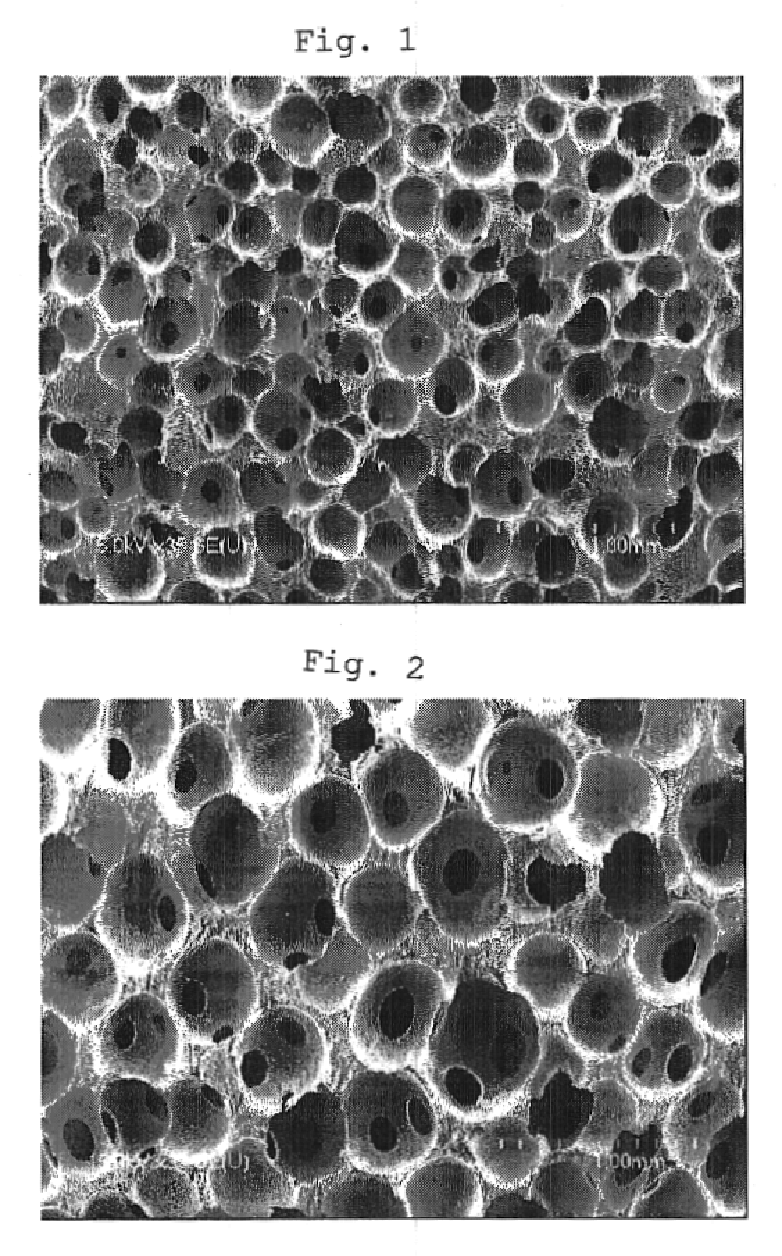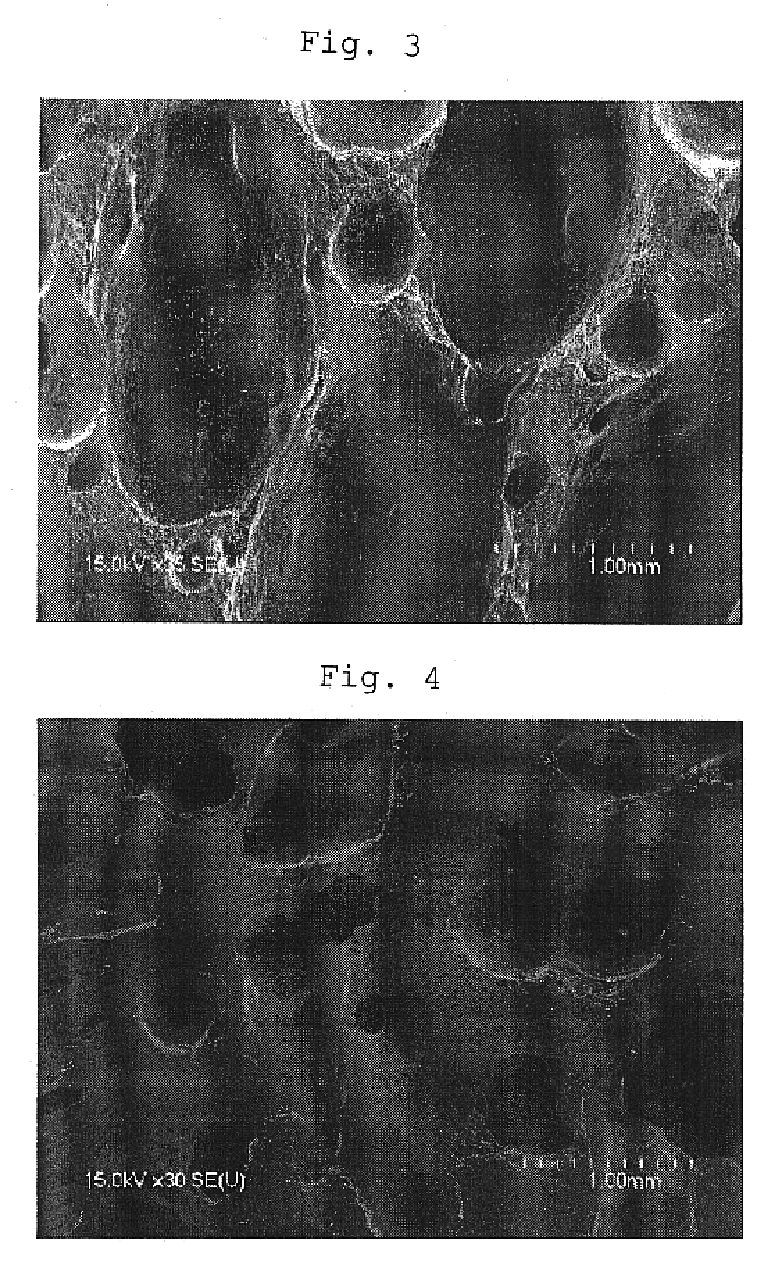Carbon foam, graphite foam and production processes of these
a technology of graphite foam and carbon foam, which is applied in the field of carbon foam, graphite foam and production processes of, can solve the problems of poor oxidation resistance at high temperatures, poor corrosion resistance in chemical reactions, and insufficient thermal conductivity of conventional foam made of thermoplastic resin
- Summary
- Abstract
- Description
- Claims
- Application Information
AI Technical Summary
Benefits of technology
Problems solved by technology
Method used
Image
Examples
example 1
Naphthalene was polymerized in the presence of a superacid catalyst HF-BF.sub.3 to obtain a raw material pitch (catalyst molar ratio: naphthalene / HF / BF.sub.3 =1 / 0.35 / 0.15, reaction temperature: 265.degree. C.). The softening point of the above pitch according to a flow tester was 227.degree. C. The atom ratio (H / C) of hydrogen to carbon was 0.606. The ratio (Daromatic / Daliphatic) of the absorption intensity of an aromatic C--H stretching vibration, measured with FT-IR, to the absorption intensity of an aliphatic C--H stretching vibration, measured with FT-IR, was 0.507. The aromatic carbon index fa value calculated by the formula (1) was 0.85. The optically anisotropic content of the pitch according to an observation with a polarization microscopy was 100%, and the pitch was a mesophase pitch.
2 g of the above mesophase pitch was placed in a cylindrical vessel which was made of aluminum and had an internal diameter of 13 mm, a depth of 29.15 mm and an internal volume of 4.17 cm.sup.3...
example 2
The same raw material pitch as that in Example 1 was used, and an investigation was carried out in the same manner as in Example 1 except that the pressure was increased to 3.5 MPa with nitrogen while keeping the temperature of 350.degree. C. and the temperature was increased up to 550.degree. C. at a rate of 2.degree. C. / minute. Tables 1 and 2 show the results.
examples 3 and 4
An investigation was carried out in the same manner as in Example 1 or Example 2 except that a raw material pitch was synthesized in a catalyst ratio of naphthalene / HF / BF.sub.3 =1 / 0.32 / 0.074 at a synthetic temperature of 245.degree. C. Table 1 shows the results.
PUM
| Property | Measurement | Unit |
|---|---|---|
| softening point | aaaaa | aaaaa |
| pressure | aaaaa | aaaaa |
| temperature | aaaaa | aaaaa |
Abstract
Description
Claims
Application Information
 Login to View More
Login to View More - R&D
- Intellectual Property
- Life Sciences
- Materials
- Tech Scout
- Unparalleled Data Quality
- Higher Quality Content
- 60% Fewer Hallucinations
Browse by: Latest US Patents, China's latest patents, Technical Efficacy Thesaurus, Application Domain, Technology Topic, Popular Technical Reports.
© 2025 PatSnap. All rights reserved.Legal|Privacy policy|Modern Slavery Act Transparency Statement|Sitemap|About US| Contact US: help@patsnap.com


